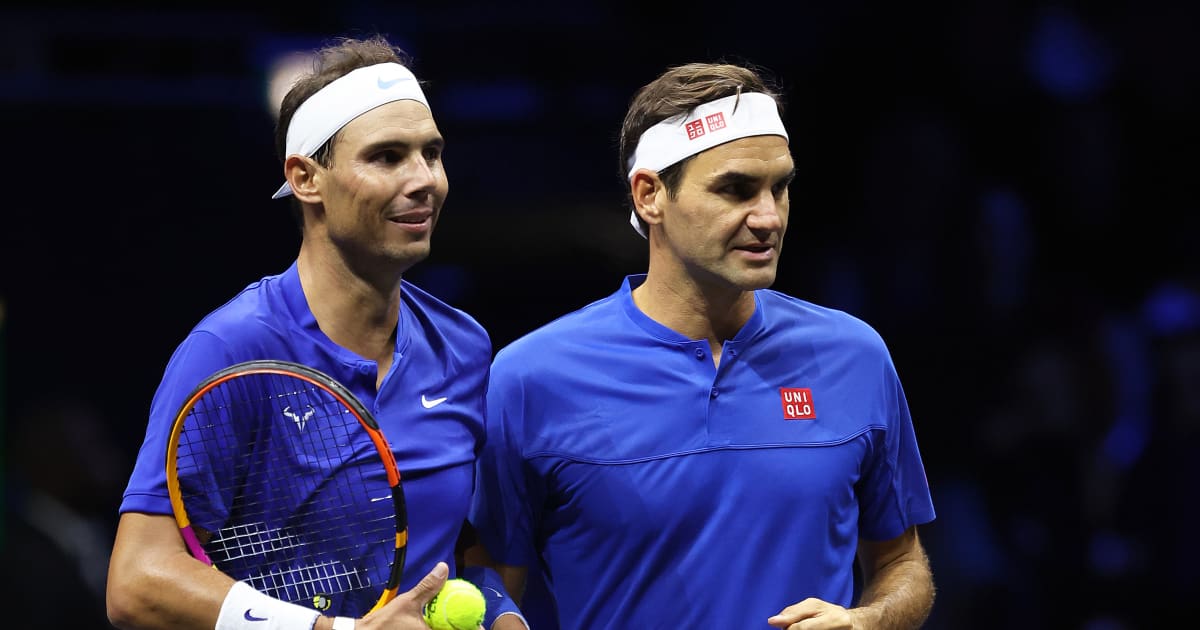Laver Cup’s Team World and the mirror it holds up to tennis as a sport

How does a tennis team captain with six continents at his disposal end up scrambling for players? Andre Agassi, the seven-time Grand Slam champion, has been finding out in recent weeks.Agassi is the new leader of Team World at the Laver Cup, the annual team event co-founded by Roger Federer in 2017 which begins Friday in San Francisco. On the face of it, the 55-year-old American has an uncomplicated task: construct a tennis team of six players from a roster of six continents.Instead, injuries, burnout and wedding plans led Agassi to a late scramble, which ended in Alex de Minaur of Australia belatedly replacing Frances Tiafoe of the United States. His team of six now has a 50/50 split between the U.S. and everywhere else, which is the best ratio the global team has managed in the Laver Cup’s short history.Of the 48 slots for Team World to date, 25 have gone to Americans and seven to Canadians, with six countries represented in total. The other four are Argentina, Australia, South Africa and this year Brazil, with rising talent João Fonseca on Agassi’s roster. The 19-year-old is one of Agassi’s three captain’s picks; three players receive automatic invitation to play through their world ranking at the end of the French Open in June.The Laver Cup aspires to be the Ryder Cup of tennis, seeking the weight and prestige of the biennial golf competition that pits Europe against the U.S. Like that event, the teams are composed with a mix of automatic qualification by ranking and captain’s picks, but the aspiration says a quiet thing about the Laver Cup out loud: In this battle of Europe against the world, the U.S. and Canada are most often at its center.While Europe joined the Ryder Cup in 1979 to give Great Britain a hand against the U.S. vs. Great Britain, in tennis, it’s the U.S. that needs a hand. In the nine seasons of men’s tennis containing a Laver Cup, Europeans have won every single Grand Slam title. (The fact that all three of the Big Three came from the continent helps.) When the ranking invites for this year’s Laver Cup went out in June, Europe had bagsy rights on the top six players; the appearance fees that players receive are also tied to their rankings.Still, Earth minus Europe has a lot of people and a lot of countries. But the three picks per captain — and even the three selections by ranking — are affected by the old tennis dance between scheduling, economics, and star power that drives just about everything in the sport. The presence of Federer, Rafael Nadal and Novak Djokovic made selling Laver Cup tickets a sure thing until 2022, when Federer retired in tears after playing with Nadal, his great rival, in a doubles rubber.Since then, the event has had to drive a little harder at picking the people it believes will sell tickets. Tennis may be a global sport, but a lack of professional tournaments, figureheads to serve as inspiration and the sport’s colonial history means Africa’s own tennis culture is still developing. Asia hosts plenty of tournaments and has plenty of players; Alexander Bublik of Kazakhstan, one of the most mercurial talents in the sport, has questioned the focus on North and South America and Australia on several occasions. They have again provided all the players this year.Fonseca, whose ascent has helped to reanimate his Brazil’s tennis fervor, was an obvious pick for Agassi; Francisco Cerúndolo is the top player in Argentina, whose fans await their next Juan Martin del Potro. Those two were slated to join Agassi’s three ranked picks plus one, all of whom come from the U.S.: Taylor Fritz, Ben Shelton, Tommy Paul and Frances Tiafoe.Fritz is still in, but Shelton and Paul emerged from the U.S. Open with injuries. Tiafoe is prioritizing rest after a run of disappointing results. So Agassi and his vice-captain, Pat Rafter, started searching.U.S. Open semifinalist Félix Auger-Aliassime of Canada would have been a solid sub, but he has the audacity to be getting married.World No. 8 Alex de Minaur, an automatic ranking pick in June, had planned to skip the event. He had to hustle back to Australia after the U.S. Open for a Davis Cup tie against Belgium. Flying back across the Pacific for the Laver Cup, then back once more for the hard-court swing of tournaments in Asia, felt self-defeating.Rafter, his compatriot, picked up the phone to do some arm-twisting. Soon, de Minaur was singing a different tune.During an interview Thursday in San Francisco, de Minaur said that playing the event hadn’t really made sense for his schedule. Rafter, he said, then assured him they wouldn’t wear him out too much. “The priority has to be the body,” said de Minaur, who needs to have solid swing in Asia to lock in his spot for the ATP Tour Finals in Turin this November.“Once I had that assurance I believed I could do it,” he said.That still left two spots to fill. Another Australian, Alexei Popyrin, was next by ranking in June but has dropped since. Denis Shapovalov of Canada is playing an ATP event in China. Sebástian Báez of Argentina is not a hard-court fan.So when the calls, calendar wrangles and appearance fees were done, Team World went back to the well: 21-year-old Alex Michelsen and 28-year-old Reilly Opelka of the U.S., with another American, 24-year-old Jenson Brooksby, as reserve. The two recruits like the indoor conditions, especially Opelka with his monstrous serves. And Rafter said in an interview last month that his team had its work cut out, even before its two top players, Fritz and de Minaur, found themselves arriving in San Francisco after Davis Cup defeats and, in their eyes, U.S. Open disappointment.“There won’t be that grinding training, two-on-ones and point play and match play … I envision getting their focus back and enjoying the experience, and then when it comes game time, being able to switch on for those matches,” Rafter said.Then there is the challenge of coming in as a big underdog to Alcaraz and his crew. Even with the world at their back — the tennis one, at least.— Charlie Eccleshare contributed reporting.(Top photo: Ezra Shaw / Getty Images)











